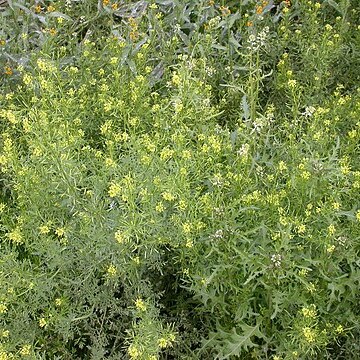Erect, 2–7 dm; lvs oblong to oblanceolate, the lower the larger, bipinnate, or pinnate with deeply pinnatifid segments, the upper progressively reduced and less dissected; fls 2–4 mm wide; mature racemes elongate, to 3 dm, with widely divergent pedicels 5–20 mm; frs narrowly clavate, 5–13 × 1–2 mm; seeds in 2 rows in each locule, at least near the middle; 2n=14, 28, 42. Dry, open or sparsely wooded places; throughout most of N. Amer. Two vars. in our range. Var. pinnata, occurring chiefly on the coastal plain from se. Va. to Tex., has canescent, nonglandular herbage (sometimes glandular in the infl), and spreading or ascending frs 5–10 (avg 1) mm. (Sisymbrium canescens) Var. brachycarpa (Richardson) Fernald, a chiefly northern plant extending s. to N. Engl., W.Va., Tenn., and Tex., has glandular (sometimes also hairy) herbage (incl. the infl) and ascending to erect frs 6–13 (avg 9) mm. (Sophia p.; S. incisa; S. intermedia; S. millefolia)
A cabbage family herb. It grows each year from seed. The flowers are bright yellow. The seed pods are long and slender.

